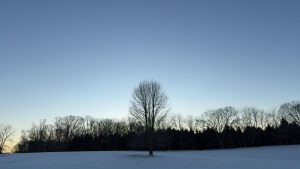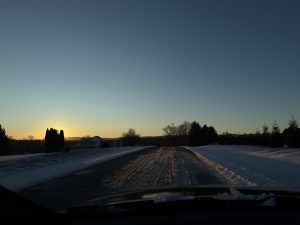Almost a foot of ice and snow cancelled school for a week, and we have had regular below freezing temperatures—two months ago, we were averaging in the 80s. What is going on with Virginia’s winter?
It is no secret that the climate is rapidly changing around us, warming our planet and messing up weather cycles globally. But arguably, until recently, in Woodgrove’s home of the Northern Virginia area, global warming has not been all that apparent, despite other parts of the world being hit hard.

This year, the abundance of snow and very sudden change of temperatures are direct results of climate change. A member of the online Environmental Protection Agency (EPA) web team commented: “In recent years, a higher percentage of precipitation in the United States has come in the form of intense single-day events.” An example of this is the heavy snow that Northern Virginia experienced in the first few weeks of January. With heated oceans across the world, more energy is in the climate system, meaning it might not snow as often in middle northern hemisphere regions like Virginia. When it does, though, it will hit hard.
Essentially, climate change’s impact on our state and general region are not always seen directly as “warming,” but the imbalance in our atmosphere and weather patterns. Ms. Amber Bartling, one of Woodgrove’s Environmental Science teachers, brought a more local view that reinforced this idea. Climate change is actually noticeable over the long term, and winter, like this year’s, is a good indicator. “I think one of the obvious ones is the lack of snow days…We have 15 built in, and in the past we have used all of them,” Bartling shared. Although this supports the slow build up of heat that we associate with global warming, the kind of phenomenon we do not as readily recognize in Northern Virginia is “that polar vortex of air that came down and landed all that snow on us randomly,” Bartling continued.
Both the EPA team and Bartling’s comments highlight some prospects for what winter may look like in the future: an exponential projection of the polarized effects we see today. According to National Geographic’s 2024 study on winter weather, “Snowstorms will become less frequent, but when they do happen, we’re going to be slammed with snowfall because the air is holding more moisture.” In late 2024, the average global climate temperature passed 1.5 degrees Celsius above the natural average, meaning it will naturally be warmer, and more precipitation will occur.

On a personal level as well, winter’s decline has meaning to Loudoun County residents. Aidan Soyka, a Woodgrove senior and life-long Loudoun County resident, gave insight on how he views the oncoming change of winter weather, saying, “It makes everything much more up in the air. It affects my daily life not as greatly, but I feel like that’s kind of the point. Even though it’s not currently affecting me, it will start to affect my daily life even more soon.” His comments are reflective of a common theme in our middle region climate in Virginia—sometimes it is harder to see, but the signs are here, and change is coming.
Bartling made sure to bring both possible perspectives to the table, because although the noticeable difference in winter conditions over the years are present, there is still hope. “It really does seem all doom and gloom, but there are really great people doing really great work,” she said. Whether this means local efforts at Woodgrove such as tree planting and environmental awareness campaigns, or the global efforts of climate agreements and emissions reductions laws, we are making some progress. It will be difficult to reverse what is changing, but there is hope yet.


